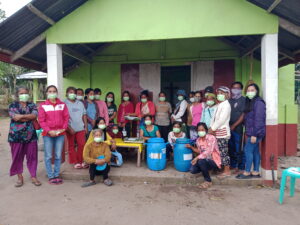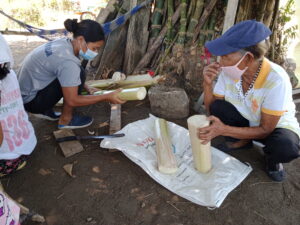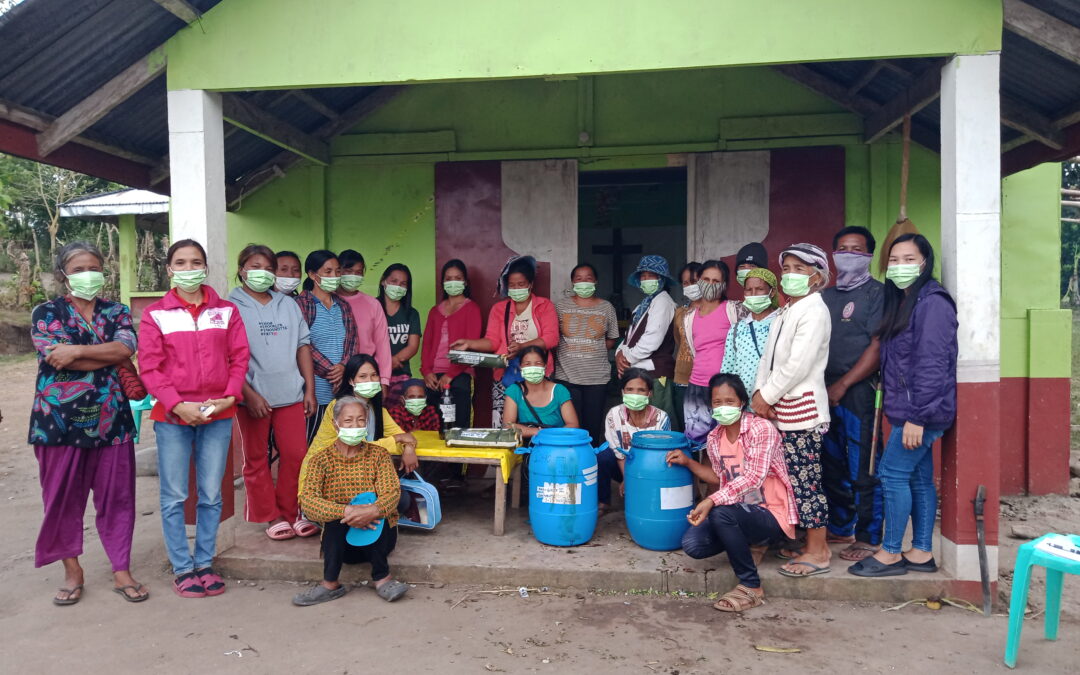
Participants of sustainable Agriculture trainings
“Tapno mapa baba tayo iti gastos iti panagtalon apay ketdi a saan nga dagitoy naisuro ti iyaramid ken i-apply tayo kadagiti talon ken mula tayo” to lessen expenses why don’t we use and apply these in our rice fields says Hazel Gay Lay-asan a participant from Agbannawag said after learning how to make foliar fertilizer in one of the trainings conducted by Cordillera Disaster Response and Development Services Inc. in Tabuk City, Kalinga.
Series of sustainable agriculture trainings were conducted by CorDisRDS in partnership with Center for Development Programs in the Cordillera (CDPC) in two barangays of Tabuk City: Agbannawag and Lacnog. Five people’s organizations participated in these trainings which includes Sotto Community Farmers Association (SCFA), Agbannawag Farmers Organization (AFO), Timpuyog Mangged Talon ti Agbannawag (TMTA), San Isidro Women Association (SIWA) and in Lacnog the Kalaokan Lacnog Farmers Association (KLFA).
Most of the farmers in Tabuk City has adapted the use of commercial fertilizer and pesticide on high yielding rice varieties and vegetables. Commercial inputs such as fertilizers and chemical sprays are indispensable to the cultivation of high yielding rice varieties. Farmers have no other resort but to use these expensive inputs to sustain yield, control pests and diseases. The strong market promotion of chemical fertilizers to increase yields encourages farmers to adopt and use them despite the high cost of chemical inputs. Farmers are aware that these can adversely affect soil fertility, food quality, human and animal health and environmental quality. Despite the knowledge, farmers opted to continue using synthetic inputs in the hope of having more produce.

Kangkong is one of the abundant plants in Tabuk, If fermented it can be used as growth enhancer.
The training for sustainable agriculture was planned and conducted to show other alternatives to the community. To enhance knowledge, skill and attitude of farmers and make use of available resources as fertilizer and pesticides. Some of the outputs of the trainings were Indigenous micro-organism (IMO) which can enhance growth and productivity of plant. It can also be used as compost enhancer and odor eliminator for livestock. Fermented plant juice (FPJ) using kangkong, camote or banana trunk can enhance plant growth resulting to a greener and healthier plant. Fermented fruit juice (FFJ) using mango, banana, papaya or any other sweet fruit available contains enzymes making fruit sweeter. Oriental Herbal Nutrients using ginger, garlic, onion can be used as pesticide and calcium phosphate using eggshell, animal bones or shells/ kuhol to induce flowering.
After the trainings farmers were able to apply on their own backyard gardens and rice fields. Hector of Lacnog said that he observed that plants became more robust during the vegetative stage and he also noted lesser pest during the cropping period.
 Banana is available widely in the region. The trunk can likewise be fermented and can be use as fertilizer.
Banana is available widely in the region. The trunk can likewise be fermented and can be use as fertilizer.
There are alternative options that are not expensive such as the use and processing foliar fertilizer and these techniques are helpful to small farmers who cannot afford to buy expensive farm inputs but at the same time it is very laborious process.
Training farmers in Tabuk still continues despite the pandemic, observing minimum health protocols. CorDisRDS pursue these trainings with the understanding that farmers cannot postpone planting. Sustainable Agriculture is but timely and necessary since most farmers don’t have resources to buy inputs but still wants to increase their yield.

